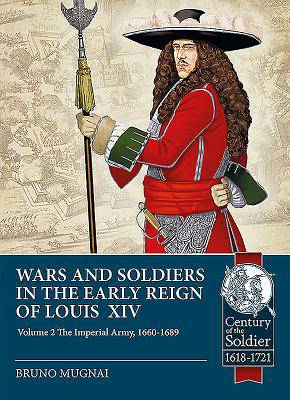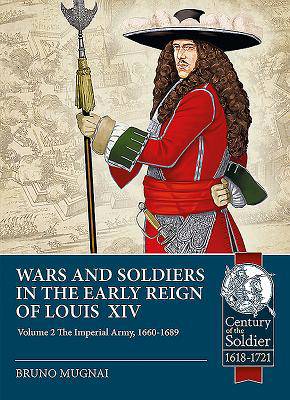
- Retrait gratuit dans votre magasin Club
- 7.000.000 titres dans notre catalogue
- Payer en toute sécurité
- Toujours un magasin près de chez vous
- Retrait gratuit dans votre magasin Club
- 7.000.0000 titres dans notre catalogue
- Payer en toute sécurité
- Toujours un magasin près de chez vous
Wars and Soldiers in the Early Reign of Louis XIV - Volume 2
The Imperial Army, 1660-1689
Bruno Mugnai
41,95 €
+ 83 points
Description
During the 17th century, Europe experienced only four years of general peace: 1610 and 1680-82. This scenario of almost continuous strife provided the terrain for the rise of the standing professional armies. The states were eager to avoid a repetition of the chaos and destruction that had plagued Europe during the Thirty Years' War, and therefore invested in these larger, more powerful armies to reduce the risks and costs of war. Some historians considered this act to be one of the most important institutional developments of the early modern world. The permanent armies became an organic feature of the Old Regime, a symbol of its power and strength, the means by which the prince could defend his interest and play an active role in the International policy.
In the opinion of many contemporaries, it offered an opportunity to exploit strategic knowledge, to examine the effectiveness of military tactics and become aware of the increasing importance of the overall organization of the army. It would allow the military classes to occupy a significant place alongside the major European powers.
In this scenario, the Imperial Army represents an interesting laboratory, which involved the multicultural Habsburg's domains and the Holy Roman-Germanic Empire in the birth of one of the major standing army of Europe. The history, organization, uniforms and ensigns of the Imperial army and the 'Reichsarmee' are here presented for the first time in a single book, with a lot of unpublished iconography and data.
In the opinion of many contemporaries, it offered an opportunity to exploit strategic knowledge, to examine the effectiveness of military tactics and become aware of the increasing importance of the overall organization of the army. It would allow the military classes to occupy a significant place alongside the major European powers.
In this scenario, the Imperial Army represents an interesting laboratory, which involved the multicultural Habsburg's domains and the Holy Roman-Germanic Empire in the birth of one of the major standing army of Europe. The history, organization, uniforms and ensigns of the Imperial army and the 'Reichsarmee' are here presented for the first time in a single book, with a lot of unpublished iconography and data.
Spécifications
Parties prenantes
- Auteur(s) :
- Editeur:
Contenu
- Nombre de pages :
- 320
- Langue:
- Anglais
- Collection :
Caractéristiques
- EAN:
- 9781912866557
- Date de parution :
- 20-02-20
- Format:
- Livre broché
- Format numérique:
- Trade paperback (VS)
- Dimensions :
- 180 mm x 244 mm
- Poids :
- 816 g

Les avis
Nous publions uniquement les avis qui respectent les conditions requises. Consultez nos conditions pour les avis.






